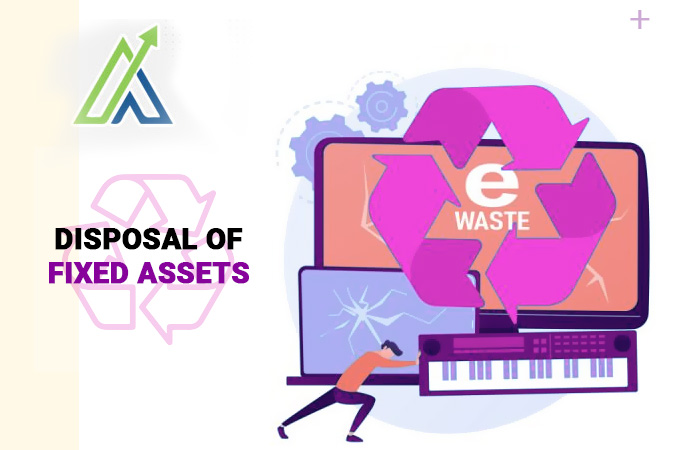Disposing of fixed assets isn’t just about clearing out old junk. It’s a key part of managing a business’s finances, ensuring compliance with laws, and squeezing every bit of value from your assets.
What Are Fixed Assets?
Fixed assets are long-term items that help a business generate income. Think of machinery, buildings, vehicles, and office equipment. Over time, these assets become outdated, break down, or simply aren’t needed anymore. That’s when you need to figure out how to get rid of them.
Steps to Dispose of Fixed Assets
The steps for disposing of fixed assets are as follows.
Identify and Evaluate
First, pinpoint which assets need to go. Conduct an inventory and assess the condition of each item. For instance, if your delivery truck keeps breaking down, it’s probably time to let it go.
Example: A factory reviews its machinery and finds an old lathe that’s too costly to maintain.
Choose the Disposal Method
There are several ways to get rid of fixed assets.
- Sale: Sell the asset through auctions, direct sales, or to scrap dealers. For instance, a tech company sells outdated computers to a local startup.
- Trade-In: Swap out the outdated tools for the latest version. For example, a logistic company is trading in old delivery vans update them with newer and more efficient ones.
- Donation: Donate the asset to a non-profit organization for tax benefits and goodwill. For example, a clinic received old equipment from a hospital.
- Scrapping: If the asset is worthless, scrap it for parts or recycling. For example, an old air conditioner gets dismantled for recyclable components.
Valuate the Asset
Before you dispose of anything, you need to know its value. Do market research, get expert advice, or hire a valuation specialist. This makes sure the gain or loss on disposal is entered correctly.
Example: A retail chain brings in a valuation expert to assess the worth of old shelving units before selling them.
Document Everything
Keep meticulous records. Update the fixed asset register, accounting books, and maintain any relevant legal documents. Transparency and regulatory compliance are ensured by appropriate documentation.
Example: An accountant updates the fixed asset register after selling an old company car and records the transaction.
Follow Legal and Environmental Rules
In India, disposing of fixed assets means complying with legal and environmental regulations. Appropriate record-keeping and reporting are obligatory under the Companies Act of 2013. Additionally, certain items, like electronic waste, must be disposed of in an eco-friendly manner.
Example: A software company ensures its e-waste disposal partner follows the e-Waste (Management) Rules, 2016, when discarding old servers.
Account for Disposal
Reflect the disposal in your financial records. Calculate the gain or loss, which is the difference between the asset’s sale price and its net book value.
Example: If a machine with a book value of ₹50,000 is sold for ₹30,000, the company records a ₹20,000 loss.
Questions to understand your ability
Q: From the following options, which step is considered the first step in disposing of fixed assets?
- Trade-In
- Sale
- Identify and Evaluate
- Donation
Q: Which disposal method provides tax benefits and goodwill?
- Scrapping
- Trade-In
- Donation
- Sale
Q: What is essential to do before disposing of an asset to record the correct gain or loss?
- Find a buyer
- Hire a mover
- Valuate the Asset
- Update the office records
Q: Which law in India requires proper record-keeping for disposing of fixed assets?
- Income Tax Act, 1961
- Companies Act, 2013
- Goods and Services Tax Act, 2017
- Indian Contract Act, 1872
Q: When an asset is worthless, which disposal method is typically used?
- Sale
- Trade-In
- Donation
- Scrapping
Conclusion
Asset disposal involves management of fixed assets which is very important. It affects your day to day operations as well as strategic decision making and profitability. Thus, following these steps can enable organizations in India to gain excellent value out of transferred equipment or used machinery while adopting compliance with legal requirements. Regardless, if you are reading this article as a commerce student at the very beginning of your student journey or as a Chartered Accountant entering practice, understanding the asset disposal process is critical whether you are a new business manager or an experienced and successful one.
FAQ's
Fixed assets are long-term items like machinery and buildings that help businesses make money. They’re essential for operations but eventually need replacement or disposal
Start with an inventory check and assess each item’s condition. If something’s always breaking down or outdated, it’s a candidate for disposal.
You can sell, trade-in, donate, or scrap them. Which one to choose relies on the state of the asset and the needs of your business.
Valuation helps you know the asset’s worth, ensuring you record the right gain or loss in your books. This step involves market research or expert advice.
Update the fixed asset register, accounting books, and any related legal documents. Good records are crucial for compliance and transparency.
A law that has been enacted recently is the Companies Act, 2013 that has provisions that accent on the issues of record keeping. Furthermore, legal provisions such as the e-Waste (Management) Rules, 2016, provide guidelines on how certain property can be disposed.
Record the disposal in your accounting books by determining the gain or loss, defined as the difference between the sale price of the asset and the net book value.
A contribution can have financial advantages like deductions on taxes as well as better image for the company. It is an effective means of eliminating unnecessary inventory and at the same time contributing to the community.

